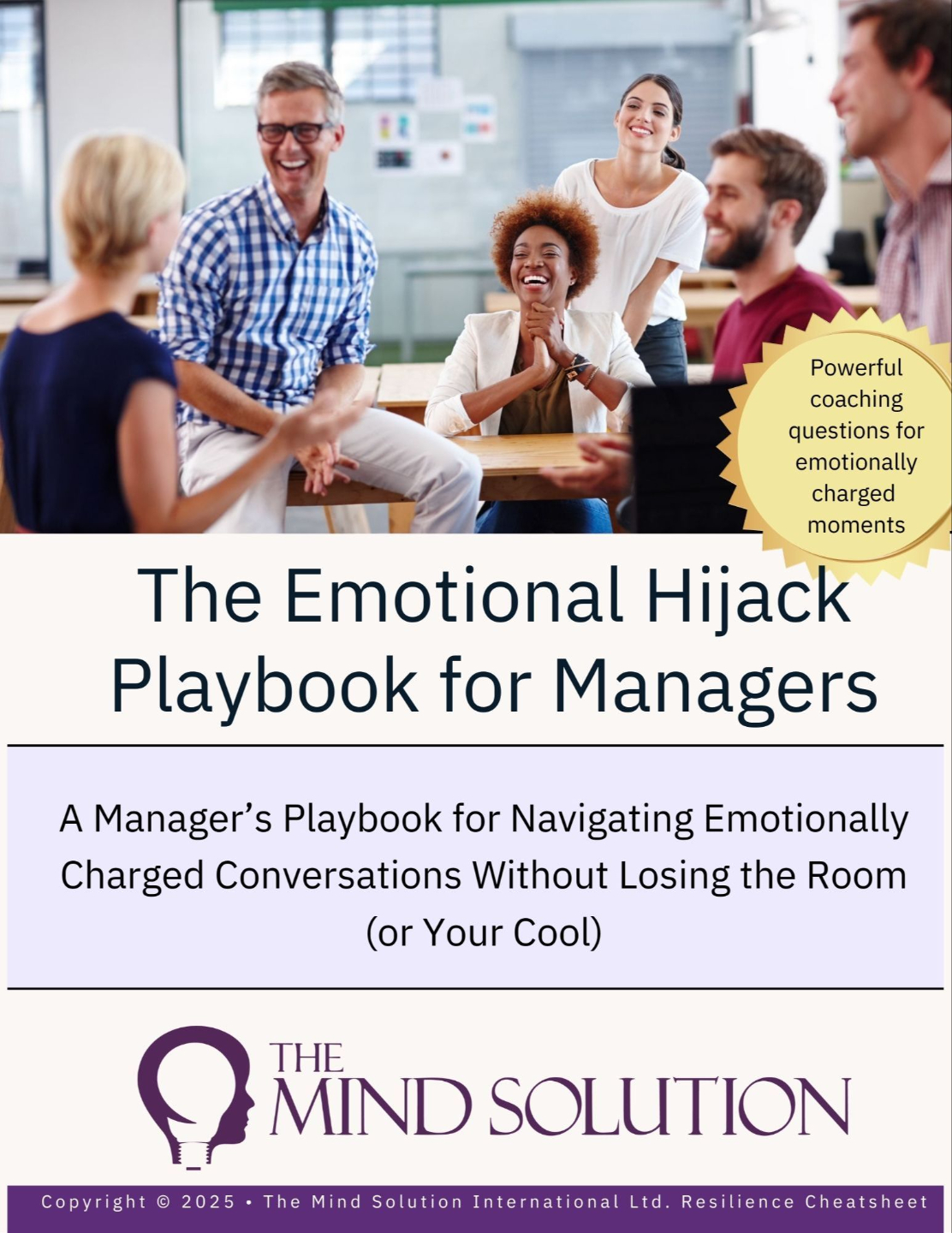Feeling Overwhelmed by Employee Wellbeing at Work? Start Here.
Jun 26, 2025
If you're in HR or L&D and you've been tasked with finding the “right” employee wellbeing programme, you’re probably feeling overwhelmed — and I don’t blame you.
Do you need mental health training for managers? Should you offer stress management or resilience training? What about ADHD, menopause, workplace trauma? Do you roll out employee wellbeing webinars, or invest in an employee wellbeing platform?
It’s a lot. Especially if you’re not a wellbeing expert.
Rewind a few years and I was in your shoes, working in HR. Back then, employee wellbeing in the workplace meant a gym discount and a bowl of apples in the break room. But the world of work has changed — and so have the expectations on you.
So let’s pause for a moment and zoom out.
Why Employee Wellbeing in the Workplace Feels So Overwhelming
Most organisations are trying to do the right thing. They care about employee wellbeing. They want to support their people. But without a clear strategy, the result is often a scattergun approach.
You might be asking:
-
Should we invest in mental health awareness training or burnout prevention?
-
Do we need online mental health training or something in person?
-
Is one wellbeing webinar enough?
-
Should we offer workplace wellbeing courses globally, or tailor them by country and timezone?
There are no easy answers — because wellbeing isn’t one-size-fits-all. But there is a way to make sense of it all.
And it starts by asking the one question most organisations skip.
What Do You Want Your Company Wellbeing Programme to Achieve?
Before you spend a penny, ask yourself:
What’s the outcome we’re trying to create?
Are you trying to reduce stress-related absence?
Improve retention?
Build a more emotionally intelligent management culture?
Support staff post-restructure or redundancy?
Strengthen psychological safety?
Your company wellbeing programme should be designed with the same clarity and purpose as your business goals. Because that’s what it is — a strategic investment, not just a nice-to-have.
So start by defining the destination. Then reverse-engineer the journey.
The Problem with Tick-Box Workplace Wellbeing Training
Let’s say you’re booking a webinar on stress management. You’ve got 100 employees showing signs of burnout. Great — the training ticks a box.
But here’s the truth no one says out loud:
A wellbeing webinar won’t fix a systemic problem.
If people are expected to do more with less…
If the culture is “always on”…
If there’s poor communication, firefighting, and no clear vision…
…then teaching breathing techniques won’t move the needle. That’s like handing out umbrellas in a hurricane and wondering why people are still getting wet.
You need to look under the surface — and that means asking what’s really going on.
Real Employee Wellbeing Solutions Start With Data (Even If It’s Imperfect)
Some organisations track absence data, engagement scores, or mental health-related leave. Others don’t — especially in the US, where “mental health days” might be logged without clarity on cause.
Whether you have robust data or not, you can still start.
Look at:
-
Exit interviews
-
Feedback from EAPs
-
Manager insights
-
Trends in presenteeism or turnover
-
Stories your people are telling you (or not telling you)
Data doesn’t have to be perfect to be useful. It just has to give you insight into the real issues your people are facing.
And that’s when your workplace wellbeing programme becomes meaningful — not just performative.
Give Employee Wellbeing a Strategic Home
One of the biggest challenges I see is this:
Wellbeing doesn’t have a home in many organisations.
I’ve had conversations about management mental health training with receptionists, engineers, and comms managers — none of whom had the information needed to shape an effective solution. In each case, HR existed… but hadn’t been looped in.
Now, I’m not saying HR must be responsible for wellbeing. But HR is the gatekeeper of your people — and holds the data, the insights, and the pulse of the workforce.
So if you’re in HR and thinking, “But I’m not a wellbeing expert,” that’s okay. That’s where I come in. You don’t need to be the expert — you just need to be the one who leads the conversation.
Let’s Cut Through the Noise
You don’t need 20 different initiatives.
You need a clear strategy, grounded in the reality of your workforce, tied to your business goals, and delivered in a way that builds emotional intelligence and long-term change.
So if this blog helped clear the fog and you’re ready to take the next step, I’d love to help you create a workplace wellbeing solution that actually works.
Let’s talk!
The Emotional Hijack Playbook For Managers
A Manager’s Free Resource for Navigating Emotionally Charged Conversations Without Losing the Room (or Your Cool).
Perfect to use in your next one-to-one.







